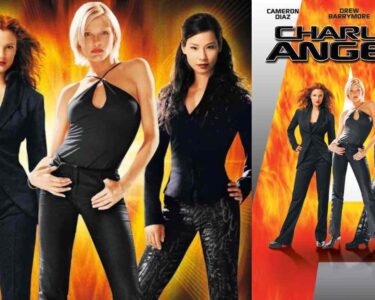How did a shy, nerdy South African boy become a world-famous American engineering tycoon? Elon Musk’s tale demonstrates how a few simple concepts, when followed consistently, may produce incredible outcomes.
Elon Reeve Musk is the eldest of his parents’ three children and a citizen of three countries: South Africa, Canada, and the United States. He was born in South Africa in 1971 to a model and dietitian, Maye Musk, and an electromechanical engineer, Errol Musk, whom Elon has described as “a terrible human being.”
Musk grew up with his nose buried in books and computers. He was bullied by his classmates and often beaten up by class bullies as a little, timid youngster until he grew strong enough to defend himself during a growth spurt in his teens.
The First Businesses

In the summer of 1995, Musk relocated to Silicon Valley. He enrolled at Stanford University’s Ph.D. program in applied physics but dropped out after only two days. Kimball Musk, Elon’s 15-month younger brother, had recently finished with a business degree from Queen’s University and had arrived in California to join him. As the early Internet grew in popularity, the brothers decided to develop a company called Zip2, an online business directory with maps.
Zip2 eventually recruited angel investors and grew into a profitable firm thanks to the brothers’ efforts. Zip2 was sold to Compaq for $307 million in 1999 by the brothers (280 million).
Elon subsequently went on to create his own online financial services company, X.com. Confinity, a company formed by Peter Thiel and two others mere months after X.com and with headquarters in the same building, was its main competitor. In March 2000, the two firms joined and adopted their primary product, PayPal, an online money transfer service for individuals.
In October 2002, eBay, the online auction site, purchased PayPal for $1.5 billion in eBay stock. Elon Musk, who had been the largest shareholder in PayPal with 11.7 percent of the company’s equity shares, found himself with $165 million in eBay stock at the age of 31.
There Are Three Missions

Since leaving PayPal, he has founded, co-founded, and led companies focused on addressing three specific existential risks to humanity’s long-term survival: climate risk, single-planet dependency risk, and human species obsolescence risk. Two of these companies, SpaceX and Tesla Motors, he risked his entire early fortune to build.
Climate Change Is a Threat.
Tesla Motors, SolarCity, and The Boring Company are all working to reduce climate risk by speeding up the transition to sustainable energy and electric vehicles.
Single Planet Dependency Threat.
Humanity’s long-term survival, according to Musk, is jeopardized if it remains confined to this one planet. Some cataclysm – an asteroid, a supervolcano, or nuclear war — will end our stay here sooner or later. In May 2002, Musk established Space Exploration Technologies Corp., or SpaceX, to get humanity off the planet.
Musk, who is both the chief technology officer and SpaceX CEO, taught himself the essential engineering abilities to construct rockets. Gwynne Shotwell, who was put in charge of business development and quickly established herself as Musk’s right-hand woman at SpaceX, was a critical hire early on. In the realm of space technology, she has become a legend, and the company may have failed if it hadn’t been for her.
Human Species Obsolescence Risk.
Artificial general superintelligences (AGSIs) – general machine bits of intelligence that are smarter than humans — will, according to Musk and other thinkers, pose a huge existential threat to humanity’s future.
That’s why, in December 2015, he co-founded OpenAI, a non-profit dedicated to the development of “friendly AI.” OpenAI makes its advanced AI research results available for free, intending to disseminate approaches for making AGSI secure and preventing powerful entities from monopolizing AGSI.
Mistakes, Adversity, And Controversy

Elon Musk isn’t an unbeatable hero. According to some former workers, he is a bright inventor with remarkable vision and capability, but he is also a difficult man to work with. He works 80-hour weeks and expects his engineers to put in the same amount of time.
He is frequently impatient with coworkers. When he is under duress, he has been known to terminate colleagues on the spot for what he considers incompetent, but others would define minor errors.
He has made several mistakes in his public interactions, including sending out fiery tweets for which he later had to apologize (he tweets a lot).
Musk faced a storm of criticism in May 2020 when he decided to reopen his Tesla Motors manufacturing facility in Fremont, California, after a two-month closure, defying an Alameda County administrator’s decision that Tesla was not an “essential business” and should remain closed due to the region’s SARS-CoV-2 pandemic lockdown.
There have been a few big blunders in essential business execution, notwithstanding controversy and ill-considered public statements. Elon Musk’s companies, Tesla and SpaceX, have weathered their shaky early development years and are now well on their way to becoming gigantic cash cows, so there’s little stopping him from driving them “ad Astra” – to the stars.
By 2026, Elon Musk wants to send humans to Mars.

Elon Musk, the CEO of Tesla and SpaceX, has long talked about his aspirations to send humans to Mars, and now he has a timetable. For the first time, Musk has mentioned a timeline for getting humans to Mars. According to CNET, Musk informed hosts Sriram Krishnan and Aarthi Ramamurthy at the start of the show, “Five and a half years.”
Also Read: Everything You Need to Know About the Delta Plus Variant
While this isn’t a strict deadline, Musk added a few cautions, stating that a slew of technology advancements must be accomplished in the interim.




